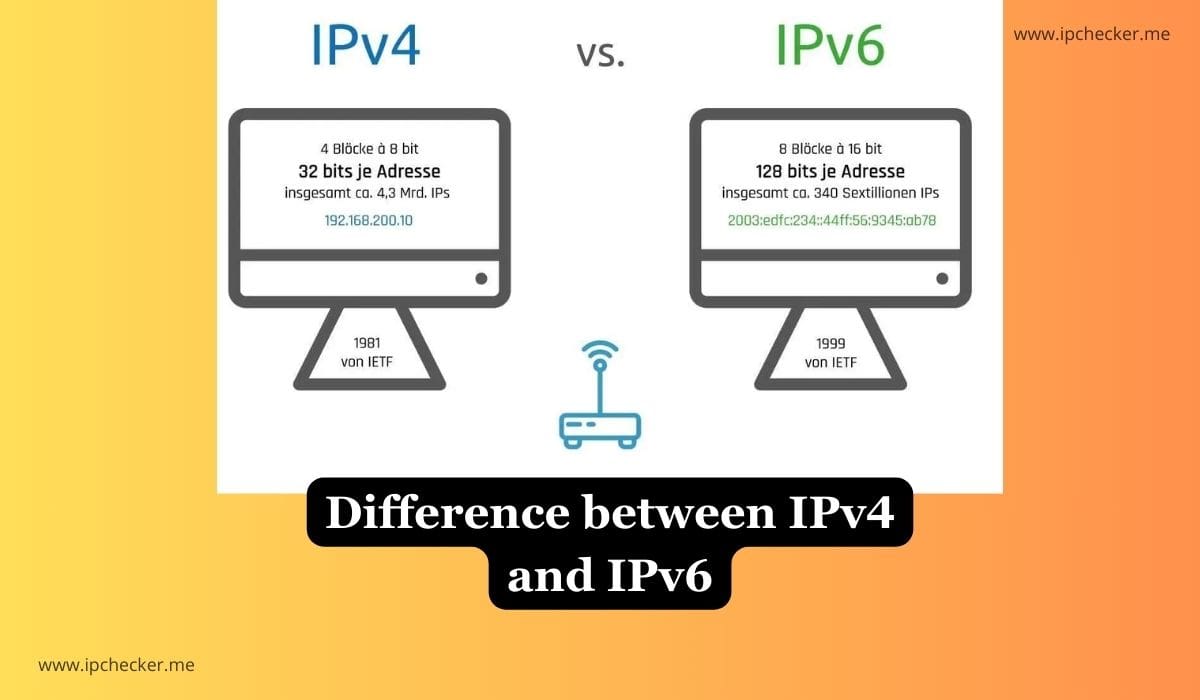IP (Internet Protocol) is the protocol that governs the communication between devices over the internet. IPv4 (Internet Protocol version 4) and IPv6 (Internet Protocol version 6) are two versions of IP.
What is IPv4?
IPv4 stands for Internet Protocol version 4, which is one of the most widely used protocols for communicating data over the internet. It is a protocol that provides a unique IP address to every device that connects to the internet, enabling communication between devices.
IPv4 addresses are 32-bit addresses represented in dotted decimal notation, such as 192.168.0.1. The 32-bit address space allows for approximately 4.3 billion unique IP addresses, which seemed like a large enough number when IPv4 was developed in the 1980s, but it is now insufficient to address the growing number of devices that are connected to the internet.
IPv4 works by dividing data into packets, which are then transmitted over the internet. Each packet contains information such as the sender and recipient IP addresses, the data payload, and other control information. Routers on the internet use this information to forward the packets to their intended destination.
Free IP Address Checker – ipchecker
Related: All DNS Record Types you Should Know
Related: What is Global DNS Propagation
What is IPv6?
IPv6 stands for Internet Protocol version 6, which is a newer version of the Internet Protocol compared to IPv4. It is designed to overcome the limitations of IPv4, such as the limited number of available IP addresses and security issues.
IPv6 addresses are 128-bit addresses represented in hexadecimal notation, such as 2001:0db8:85a3:0000:0000:8a2e:0370:7334. This provides an address space of approximately 3.4×10^38 unique IP addresses, which is significantly larger than the address space provided by IPv4.
IPv6 offers several benefits over IPv4, including:
Larger address space: As mentioned above, the larger address space of IPv6 enables a greater number of devices to be connected to the internet.
Simplified network configuration: IPv6 incorporates features such as automatic address configuration, which simplifies network configuration and reduces the likelihood of errors.
Improved security: IPv6 includes built-in support for IPsec, which provides enhanced security features such as authentication, encryption, and data integrity.
Better support for mobility: IPv6 supports mobile devices better than IPv4, making it easier for devices to switch between different networks and maintain their connection.
Better support for Quality of Service (QoS): IPv6 includes built-in support for QoS, which enables better management of network traffic and improves the overall quality of service.
Also read: what is VPN
Difference between IPv4 and IPv6
The main difference between IPv4 and IPv6 is the number of bits used to represent an IP address. IPv4 addresses are 32-bit addresses represented in dotted decimal notation (for example, 192.168.0.1), while IPv6 addresses are 128-bit addresses represented in hexadecimal notation (for example, 2001:0db8:85a3:0000:0000:8a2e:0370:7334).
IPv4 has a limited number of addresses available, which has led to the depletion of available IPv4 addresses. IPv6 was developed to overcome this limitation and provide a much larger address space, which can accommodate the growing number of devices connected to the internet.
IPv6 also offers other benefits, such as improved security, better support for mobility, and simplified network configuration.
Overall, the main difference between IPv4 and IPv6 is the number of bits used to represent the IP address, with IPv6 offering a much larger address space and additional benefits compared to IPv4.
Also read: Understand IP Address and How to Use IP Checker
Table Showing the Difference between IPv4 and IPv6
| Feature | IPv4 | IPv6 |
| Address length | 32 bits | 128 bits |
| Address format | Dotted decimal notation (e.g. 192.168.0.1) | Hexadecimal notation (e.g. 2001:0db8:85a3:0000:0000) |
| Total addresses | About 4 billion (2^32) | About 3.4×10^38 (2^128) |
| Address allocation | DHCP or manual configuration | Autoconfiguration or DHCPv6 |
| Header format | Fixed-length header with 20 bytes | Variable-length header with 40 bytes or more |
| Fragmentation | Routers perform fragmentation | Endpoints perform fragmentation |
| Security | Optional IPsec | Built-in IPsec support |
| Quality of Service (QoS) | No built-in QoS support | Built-in QoS support |
| Multicast | Uses IGMP for multicasting | Uses multicast listener discovery (MLD) |
| Compatibility | Backward compatible with IPv4 | Not fully backward compatible with IPv4 |
Suggested read: What is my IP Address – IP FAQs
